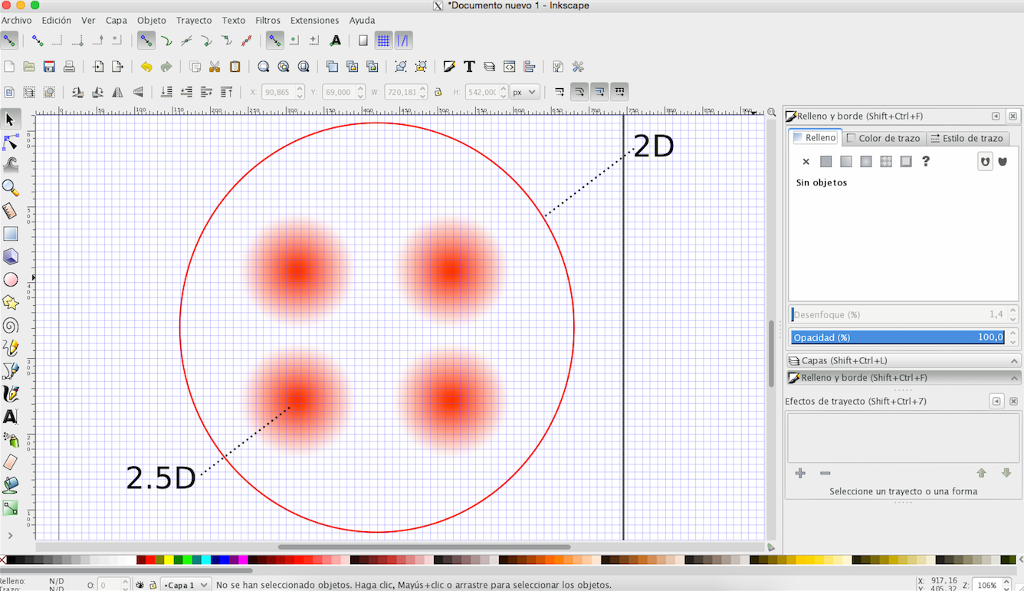How?
From the main concept of the “how to make almost anything”, last week we extracted the “thing”, trying to define the first idea for the final project.
During this second week, we start to focus on the “how”:
how are these things? how we make things? how we represent and show these things?
An idea or a concept can take form and can be materialized in almost infinites ways … the ways to make things are almost infinites … and also the ways to represent and show them can be almost infinites.
The first selection here is to starting from the digital world, exploring, using and – why not? – developing the tools of the Computer Aided Design.
For this assignment we have a classification and a list of these tools, and we are invited to use them to define, represent and build our project. CAD is not new for me, I began to use computer to design, represent and build things more of ten years ago, and I use these tools everyday … on the list I can recognize many names that I know very well, others that I used in the past, others that I use sometime just to do some special thing, others that I just have heard of them, other totally new.
While Neil was clicking all the items of the list, I was clicking also, trying to install the programs that I doesn’t knew … and at the some time thinking about how to do my assignment:
1.By defining very very well my project and trying to build them and represent very very well with the programs that I am expert?
2.Trying to learning something totally new for me and use these new tools to define and build – but maybe not very very well – my idea of the project … and having for now a not so beautiful representation?
Without any doubt, I decided for the second one, because rather than to doing just what yet I know as to do, I’m here to learn something new … to try others options, and I hope to do things that for now I have not idea about how to make …
Our way to think about things and the way how we make them, are strongly connected by a continuous feedback; also the way with which we represent things influences the things … for this, among the tools of the list, I tried to explore or open the new ones, but I selected the ones that look more interesting, some of them are totally new for me and others that I am not using everyday.
For the 2D and 2.5D tools for now I selected a tool for raster and a tool for vectorial; in general I use Photoshop and Illustrator but now I decided for GIMP and Inkscape because they are free. I have experience with GIMP but with Inkscape no so much.
For the 3D, the one that captured my attention is antimony.
I have a big experience with the 3D … the main tools that I use at the moment are Rhino and Grasshopper, but I am not “married” with one or two applications! I use and used many many programs like archicad, autocad, maya, 3D studio max, cinema 4D, catia, amorphium, autocad, top solid, 123D … and more others… sometime to modeling something, sometime to renderize, to print, to cut … by experimenting and interchanging data between them. At the moment I prefer Rhino (I started long time ago with Rhino01) for the nature of its geometries and because I think that is both powerful than very friendly and intuitive, and Grasshopper because is a way to think things a little bit more deeper from its internal structure, is a good connector and, as well as Rhino, is friendly and intuitive (before Grasshopper I used Top Solid…it was very powerful, but maybe a little bit more unfriendly).
Based on this considerations, antimony looks like a tool that invites me to think about the internal structure of the things, having the power to connect them, which allows to establish relations betweens the existent elements, or to develop new ones as well as you need.
The installation for me was not very immediate: usually I not use the terminal, but after some steps, and some help, is working.
For now I developed just a small part of my project … and It looks horrible … I have a lot of work to do next days … but today I am very happy!
documentation:
from paper to digital: scan and inkscape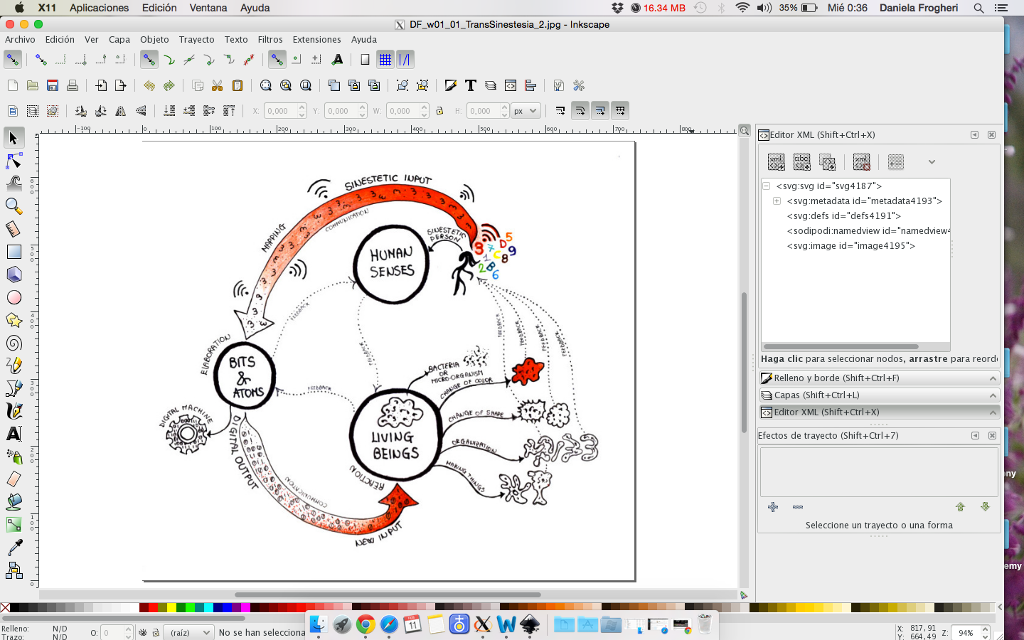
from raster to vectors: inkscape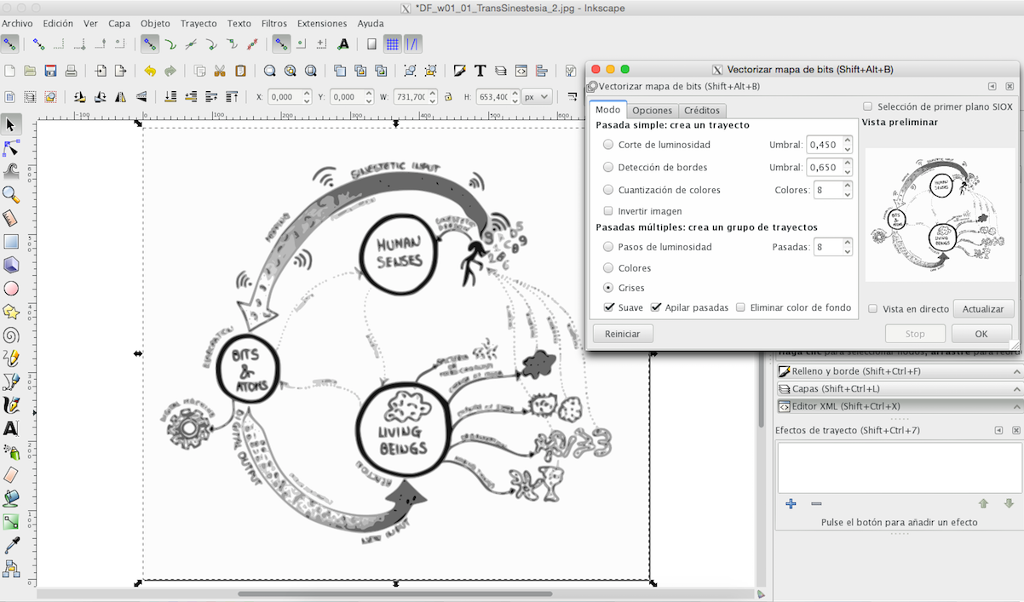
playing with antimony: first steps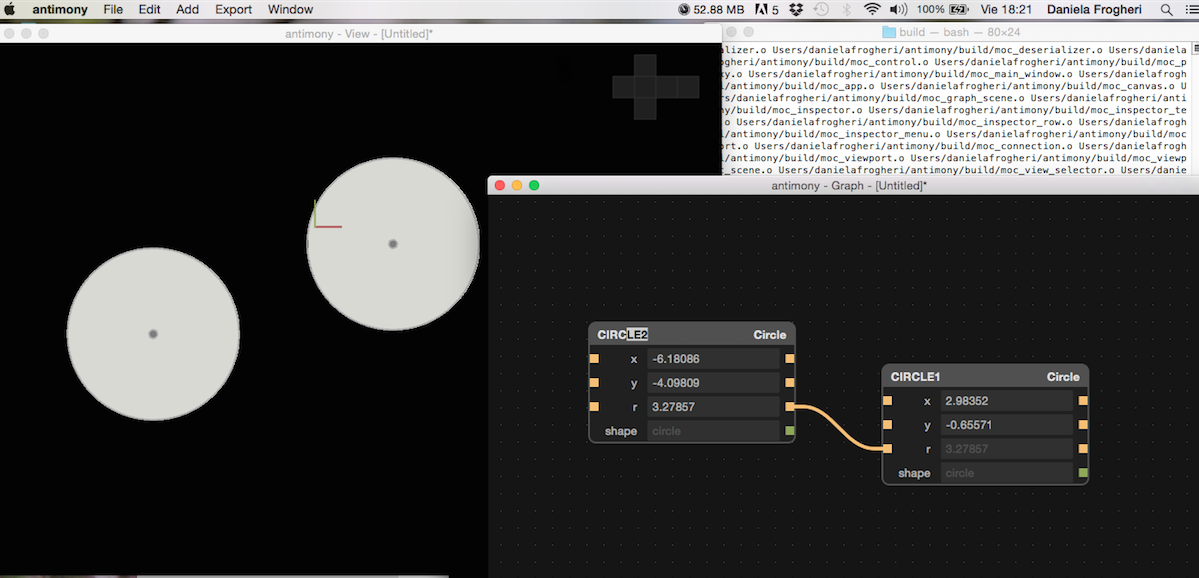
playing with antimony: attractors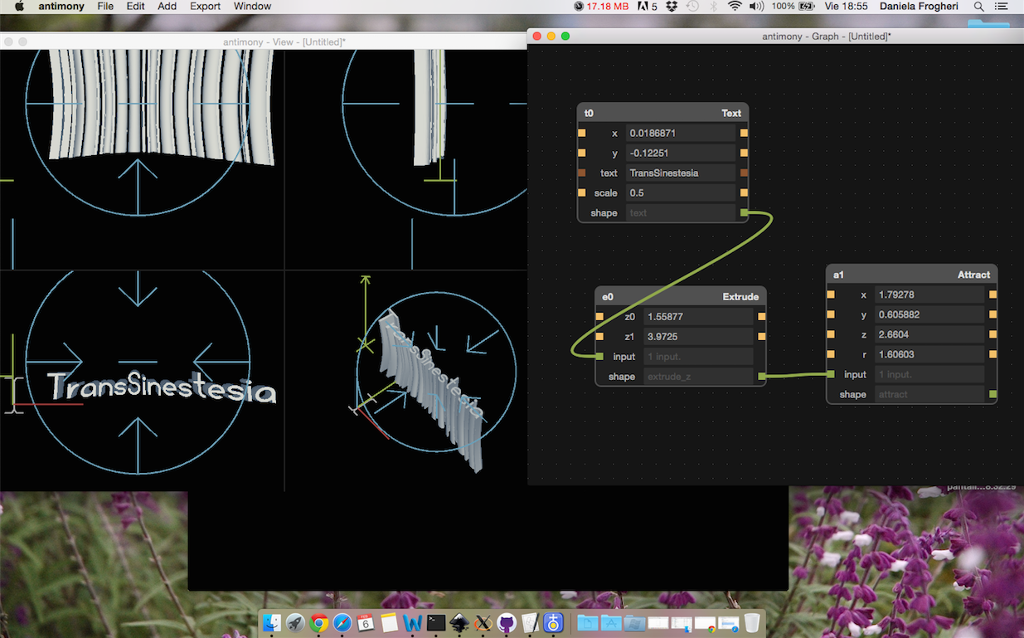
playing with antimony: iteration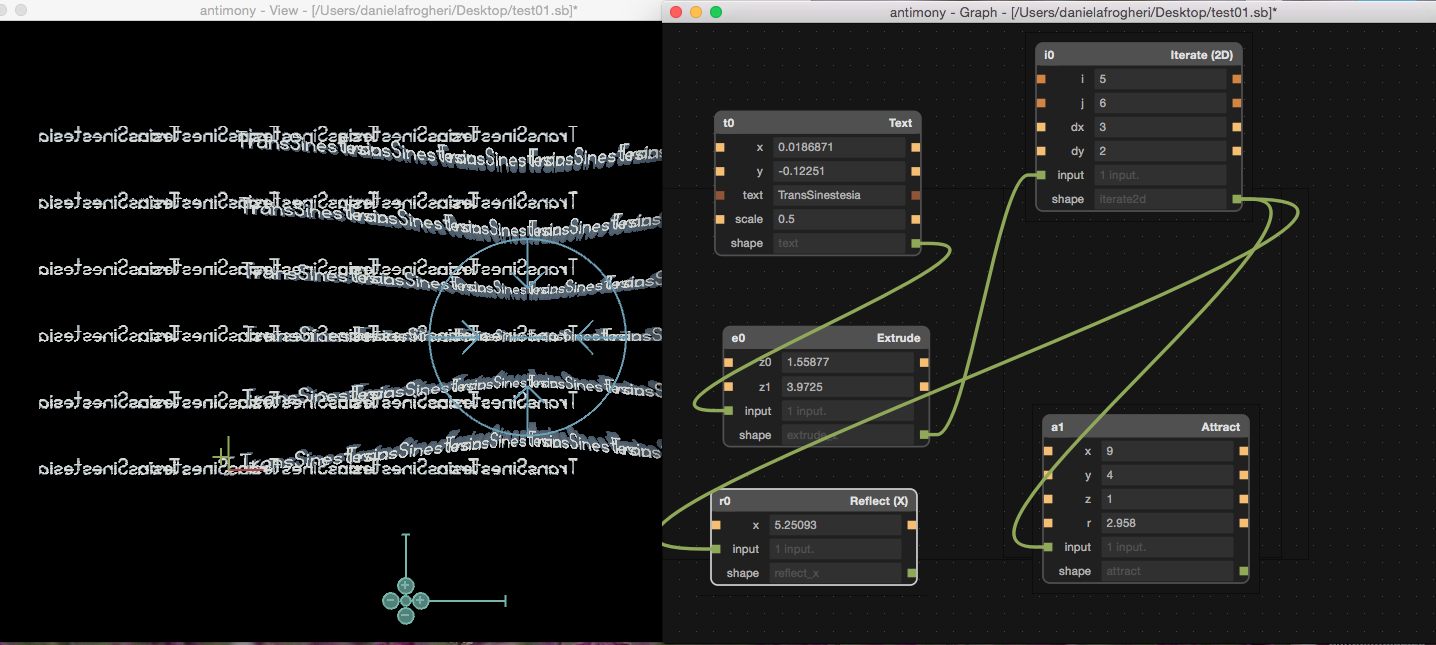
playing with antimony: difference, iteration, attraction 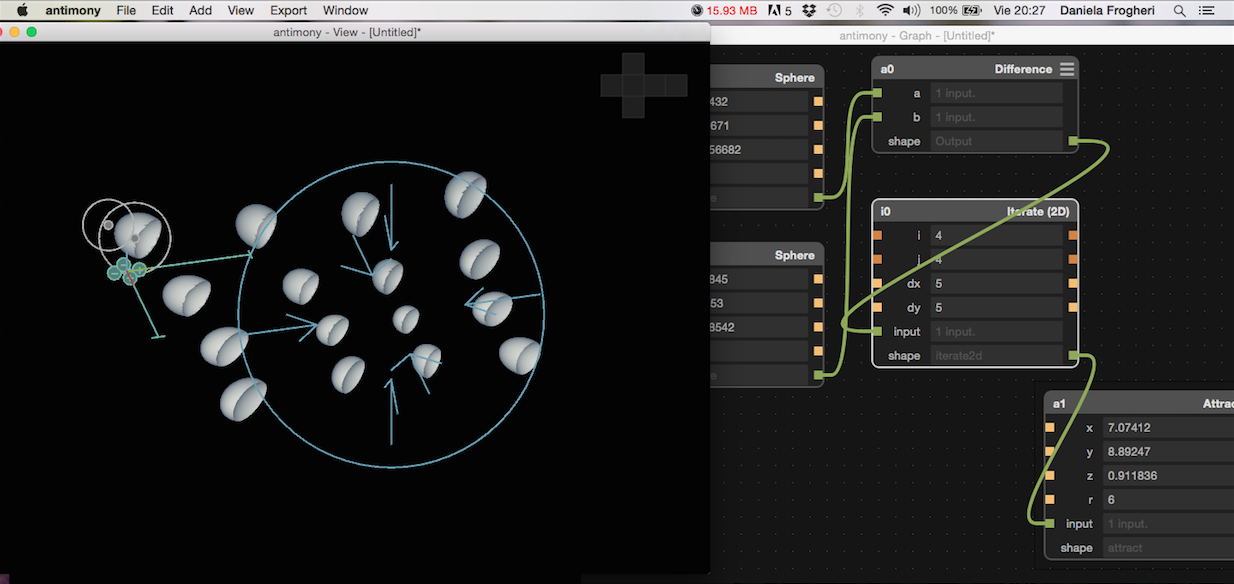
more info about me & CAD today
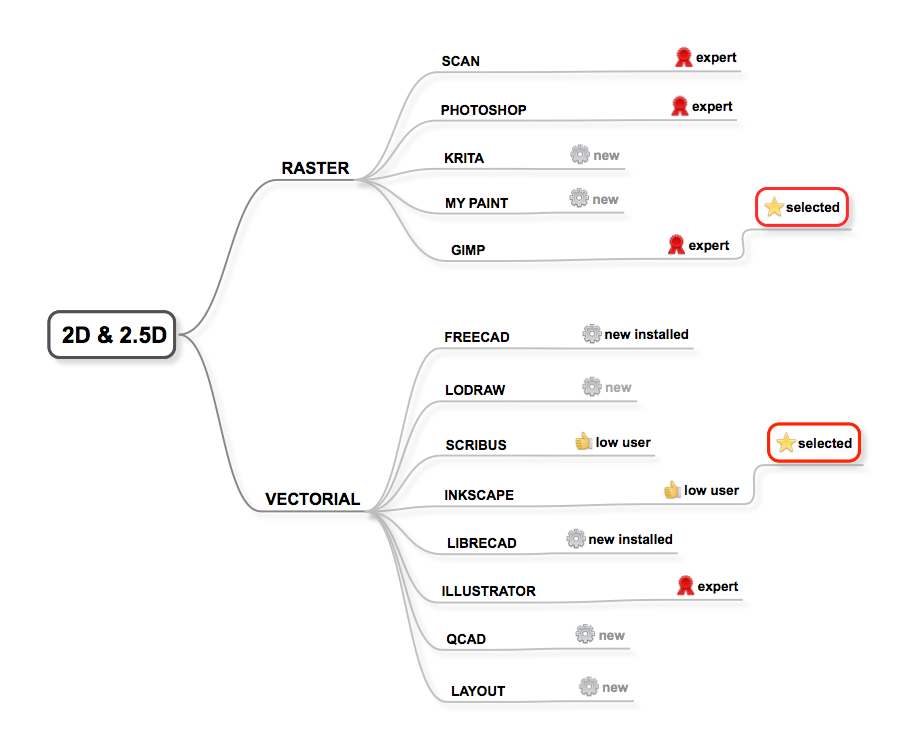
Files:

